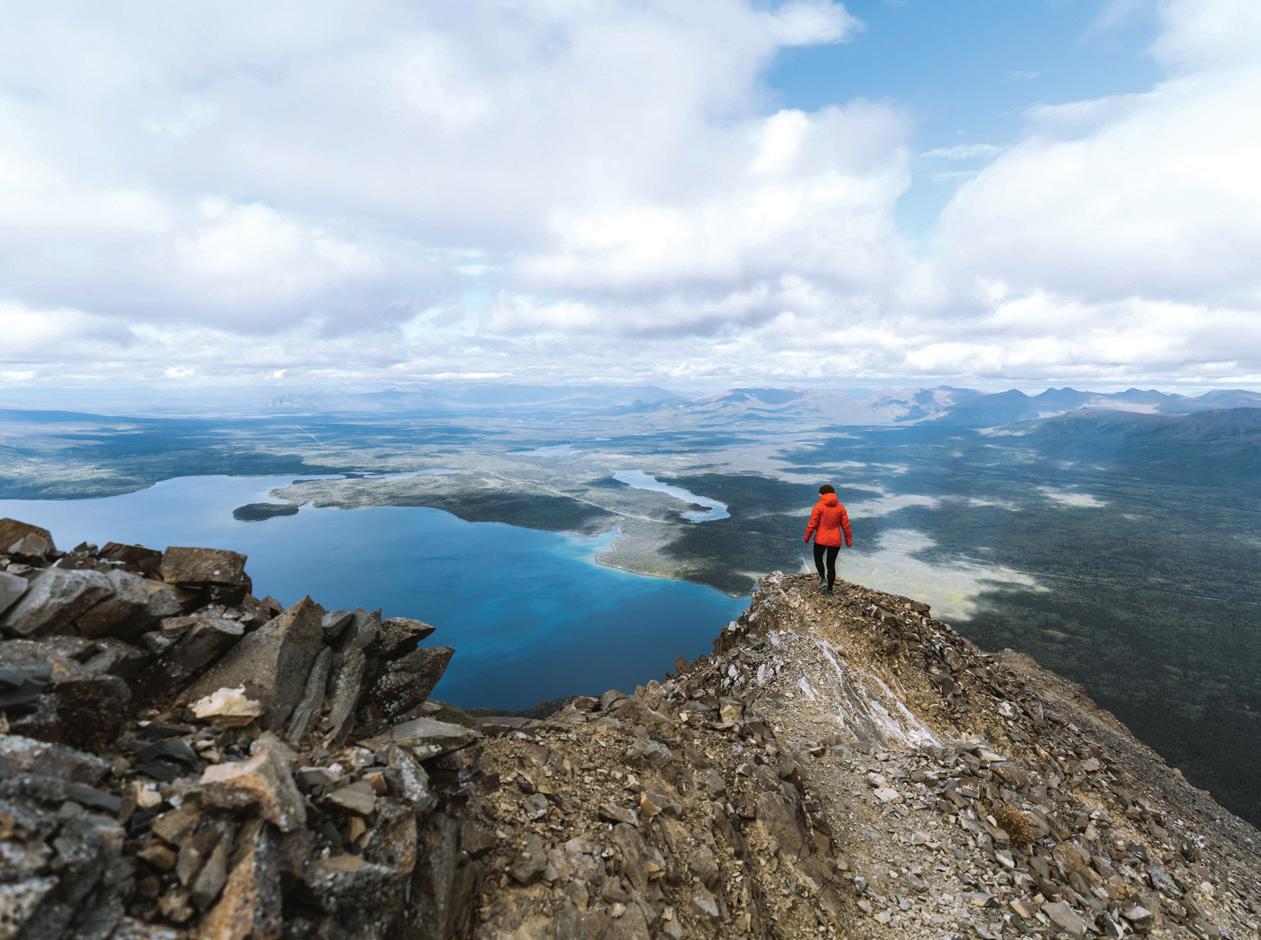
3 minute read
Exploring the Yukon Territory’s Wide Open Spaces
By Kate Robertson
The Yukon Territory is a land of extremes. The entire territory spans 482,443 square kilometres, but has a total population of only 41,000, half whom live in Whitehorse, the territory’s capital. But a tiny population doesn’t mean there’s not a lot to do. In fact, due to COVID-19, fewer people and wide-open spaces make the Yukon the perfect destination to maintain social distance. The reality is, as of 2020, space has become the new luxury.
Advertisement
BACKCOUNTRY BEAR
SPOTTINGEighty per cent of the Yukon Territory is wilderness. If you’re knowledgeable about the backcountry, you can hire expert guides to not only help keep you safe, but enrich the experience by sharing insights about local history, wildlife and other interesting tidbits about the unique culture of the Canada’s North.
On a Jeep wildlife tour, you can bounce along an old mining road through flowing creeks, steep river beds and ever-changing alluvial fans (deposits of sand and gravel carried by water) into the Alsek Valley. This virtually untouched wilderness in the southwestern corner of the territory is part of the Kluane National Park Reserve, a World Heritage UNESCO site.

In Kluane, it’s almost impossible not spot wildlife and your guide will test your animal tracking skills as you explore the sandy shores of the Dezadeash River, where moose, sheep and wolves frequent to drink and rest. As the largest internationally protected area on the planet, Kluane also has one of the densest grizzly bear populations in the world.
You can stick with the 4x4 Jeep ride, or add a hike to explore further along the old forest trail. A climb to one of the high beach ridges, left behind by a succession of glacial lakes, provides the perfect vantage point to see for miles down the expansive valleys, past the junction where the Alsek, Dezadeash and Kaskawulsh Rivers meet.
WALKING ON ANCIENT ICE
Kluane National Park Reserve is home to the Saint Elias mountain range, a sub-group of the Pacific Coast Range, which has 17 of Canada’s 20 tallest peaks, including Canada’s largest, Mount Logan. Approximately 25 per cent of the park is still covered in glaciers, including North America’s largest tidewater glacier and the largest piedmont glacier (i.e., a valley glacier which spills out onto the plains).

On a tour with Icefield Discovery (available April 1 to September 30), passengers strap into a small turbo-prop plane to soar over the cobalt-blue Kluane Lake, then over to the Kaskawulsh Glacier, which flows like a frosty ice highway down the mountain valleys, gathering debris as it goes.
As you fly between the giant mountain peaks, the pilot offers geographical and historical highlights, and thanks to well-trained eyes, points out wildlife, like grazing Dall sheep with their massive curled horns. The goal of glacier flightseeing is to catch the first glimpse of “the Big One”—Mt. Logan in all of its 6,000-metres towering-glory. Then it’s time to drop the wheel skis to land on the glacier, so you can walk on the largest non-polar icefield in the world.
EXPERIENCE DRAMATIC LANDSCAPES
Often called “Canada’s Patagonia,” Tombstone Territorial Park, located approximately 110 kilometres north of Dawson City, is about as remote as you can get. Although the name, referring to Tombstone Peak’s resemblance to a grave marker, might sound desolate, the dramatic sub-Arctic landscape is very much alive with colourful lichen, stunted shrubs and abundant wildlife, including several big game species like caribou and bears. Wild and pristine, with few established trails, prepare for rough terrain and drastic weather changes.
You must reserve ahead to stay in one of the three designated campgrounds. Hardy folks, comfortable in the backcountry, can hike in, or if you’re looking for an easier experience, book a helicopter ride to fly over the alpine lakes, rugged rocky peaks and boreal forest regions. Tombstone is only about 330 kilometres from the Arctic Circle, and the landscape incorporates permafrost tundra which is fragile, like much of Yukon’s natural beauty. Tread lightly, don’t wander off the trails, and help preserve it for future adventurers.










